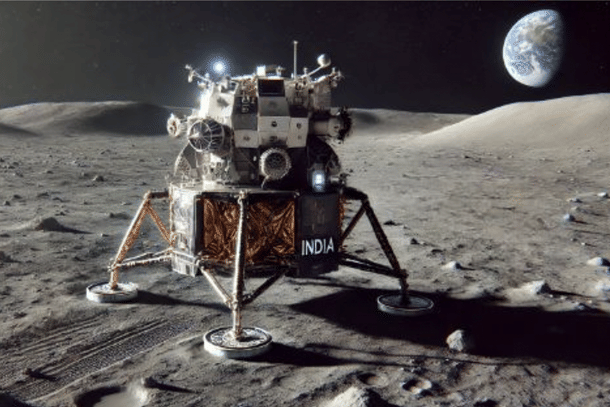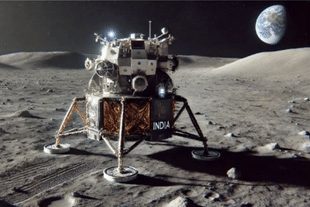Science
Chandrayaan-4 Explained: India's Lunar Mission To Bring Back Surface Samples From Moon's Southern Polar Region
Kuldeep Negi
Oct 02, 2024, 12:54 PM | Updated Oct 04, 2024, 06:23 PM IST
Save & read from anywhere!
Bookmark stories for easy access on any device or the Swarajya app.


India’s upcoming lunar mission aims to take a significant step forward by bringing back surface samples from the Moon, marking a crucial phase in the country's space exploration journey.
Set for a 2029 launch, Chandrayaan-4 mission will cost an estimated Rs 2,104.06 crore and include five critical modules: Ascender Module (AM), Descender Module (DM), Re-entry Module (RM), Transfer Module (TM), and Propulsion Module (PM).
Two LVM3 launch vehicles will carry the modules into space in separate stacks — DM + AM in one stack and TM + RM + PM as the second stack.
After two launches, the stacks will be docked together in elliptical Earth orbit to form an integrated stack.
Subsequent to docking, the Integrated Stack will perform first set of Earth-bound manoeuvres with Propulsion Module (PM).
Once the PM is depleted, it will be jettisoned from the Integrated stack.
The integrated stack (DM + AM + TM + RM) will perform all the manoeuvers to achieve the lunar orbit, such that the orbit plane has the pre-determined landing site.
In the final lunar orbit, the Ascender Module and Descender Module will get separated from Re-entry Module and Transfer Module.
The Descender Module and Ascender Module (AM) will then undergo powered descent to achieve soft landing on the lunar surface.
"After touchdown, a robotic arm, also called the surface sampling robot, mounted on the DM will scoop 2-3 kg of samples from around the landing site and transfer them to a container on the AM. In addition, a drilling mechanism will collect sub-surface samples and transfer them to another container in the AM. The containers with samples will be sealed to prevent contamination and leakage during their journey to Earth. Various phases of sample collection operations will be monitored through video cameras," the ISRO said in a statement on Tuesday (1 October).
"Once sample collection is completed, AM would ascend to the lunar orbit and dock with the parked TM+RM. Samples will be transferred from AM to RM. After sample transfer, the TM+RM will be undocked from AM," the ISRO said.
Later, the TM+ RM will perform manoeuvres to return to Earth.
At suitable entry corridor, Re-Entry Module (RM) would get separated from Transfer Module (TM) and perform ballistic re-entry into Earth’s atmosphere and finally landing onto Earth along with Lunar Sample.
The Chandrayaan-4 mission aims to use all critical technologies developed in the country.
Surface sampling, drilling mechanism, sample storage cartridge, sample transfer and docking are some of the new technologies which would be demonstrated in this mission.
Indian industries are expected to play a pivotal role in realising the mission, promoting skill development, creating significant employment opportunities and driving technological advancements.
Although the lunar samples brought back by Apollo and Luna missions revolutionised our understanding of the Moon’s origin, they were from largely similar geological areas and thus not representative of the entire Moon.
To continue piecing together the complex origin and history of the Earth-Moon system, samples are needed from new locations.
In December 2020, China’s lunar mission Chang’e 5 successfully brought samples from a geologically young region on the Moon, which revealed many facets of the Moon, especially the Moon’s complex thermal history.
India’s Chandrayaan-4 mission will bring back the lunar sample from the Southern polar region of the moon.
Also Read: Elon Musk’s X Likely To Soon Resume Operations In Brazil After Top Court Orders Fund Unblocking
Kuldeep is Senior Editor (Newsroom) at Swarajya. He tweets at @kaydnegi.





